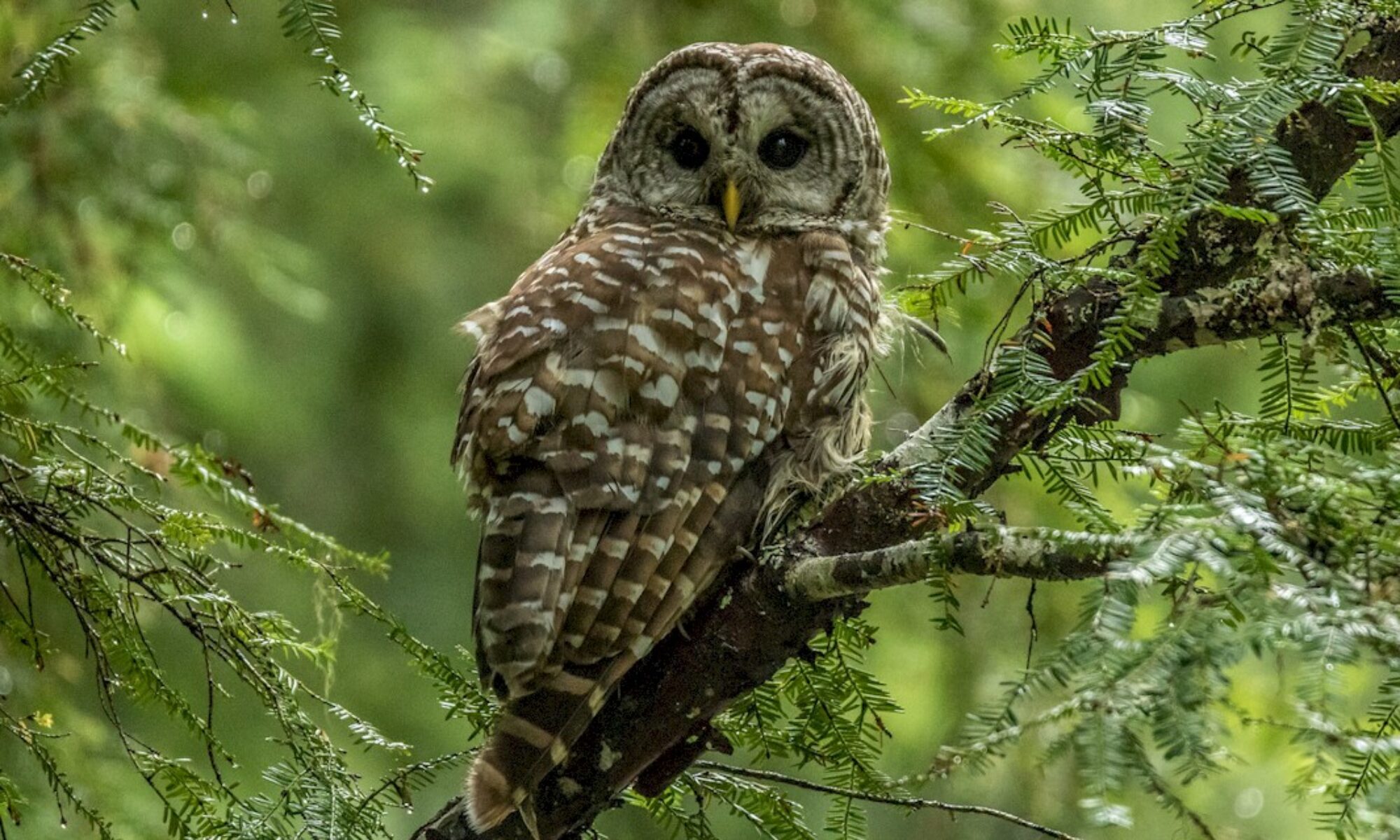Monday, February 27th
We awoke at dawn and carried our hot coffee out to the parking lot to meet a Guango guide who called in a Chestnut-crowned Antpitta, an elusive ground-dwelling bird. We spotted a White-capped dipper on the Guango River during a morning hike.
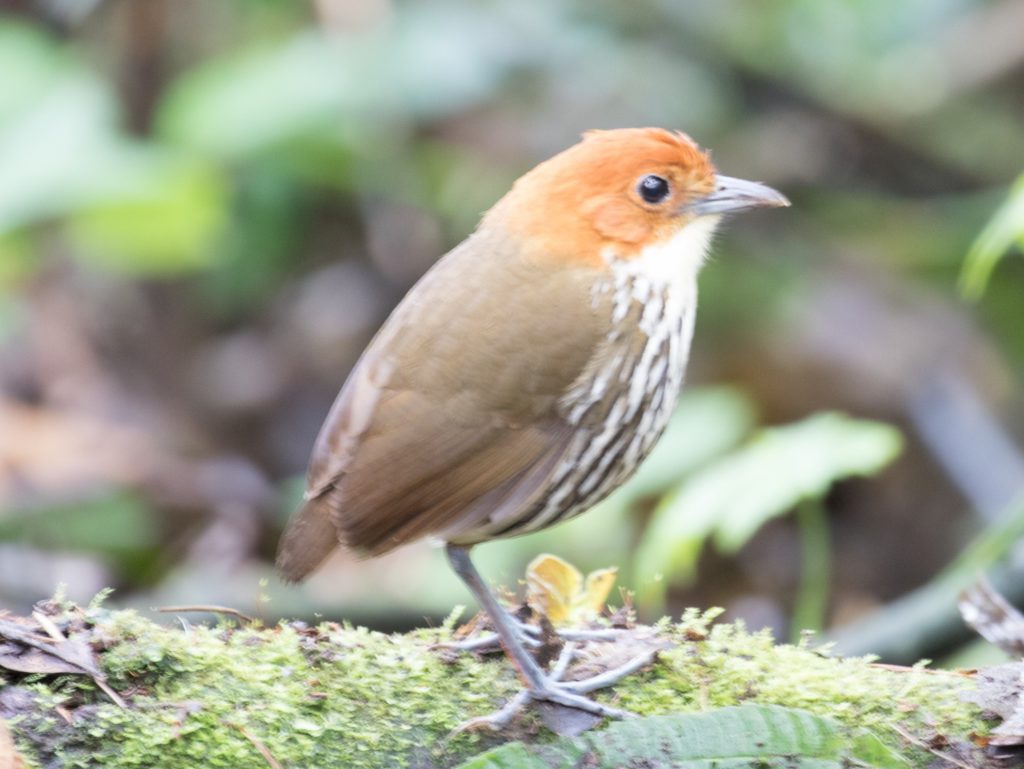
Chestnut-crowned Antpitta 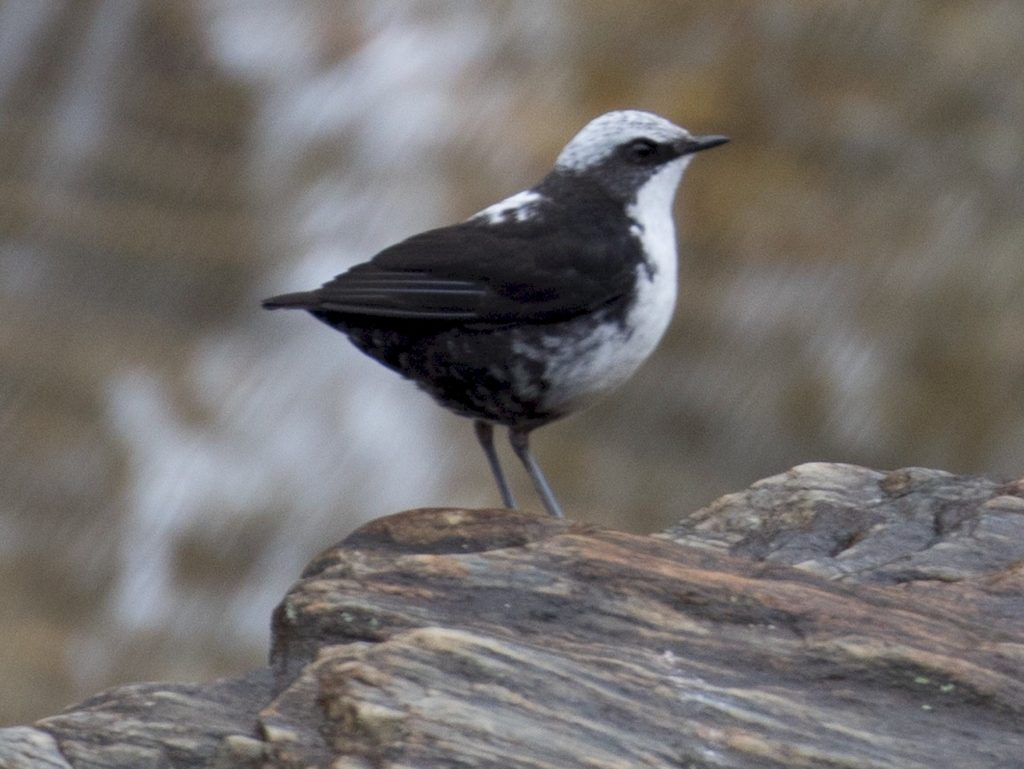
White-capped Dipper
After lunch we parted ways with the Foxes and headed down the Amazon side of the Andes to Cabanas San Isidro. Along our drive we saw people preparing for Carnival; vendors were selling things to spray on people passing by. We skillfully avoided the towns, enjoyed the beautiful drive, and arrived safely at San Isidro where we were warmly welcomed. The place had several large separate cabanas and a big main building with a large deck lined with hummingbird feeders and many bird watchers. The noisy Green (Inca) Jays were fun to watch.
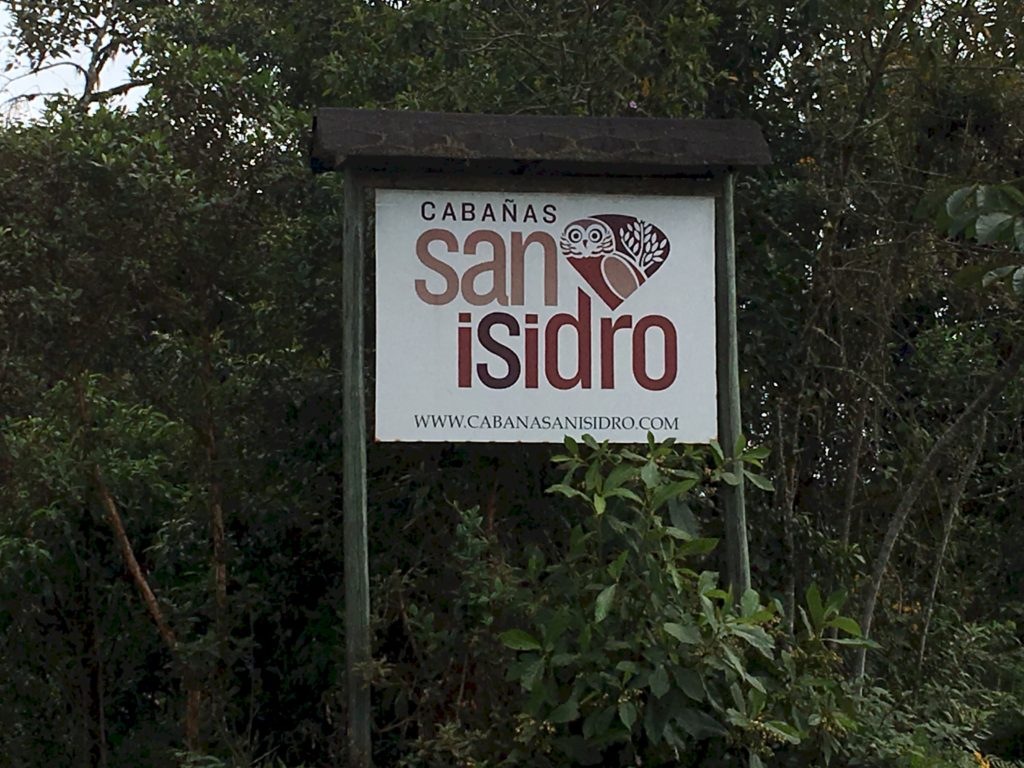
Arriving at San Isidro 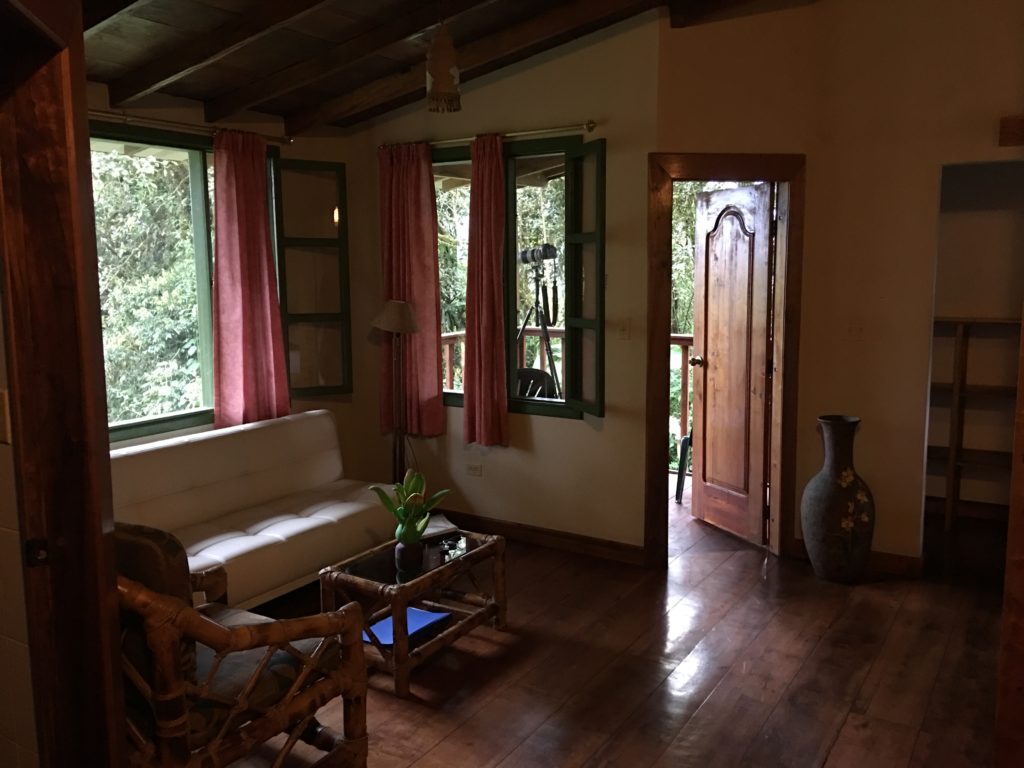
Our San Isidro Cabana 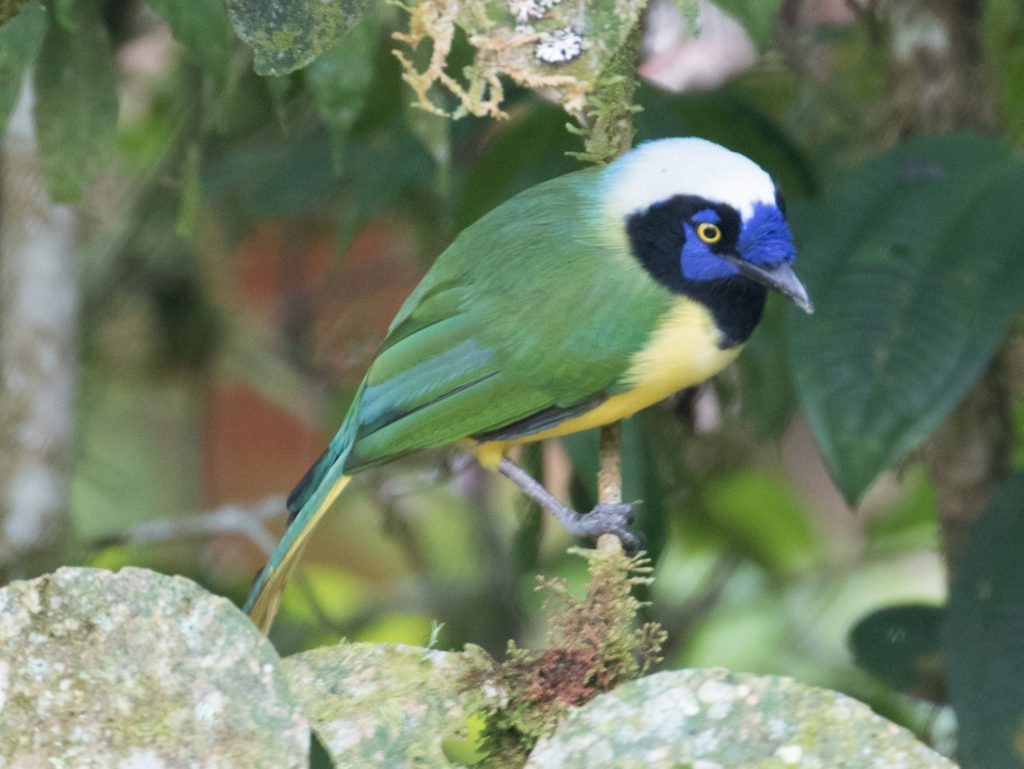
Many Noisy Inca Jays 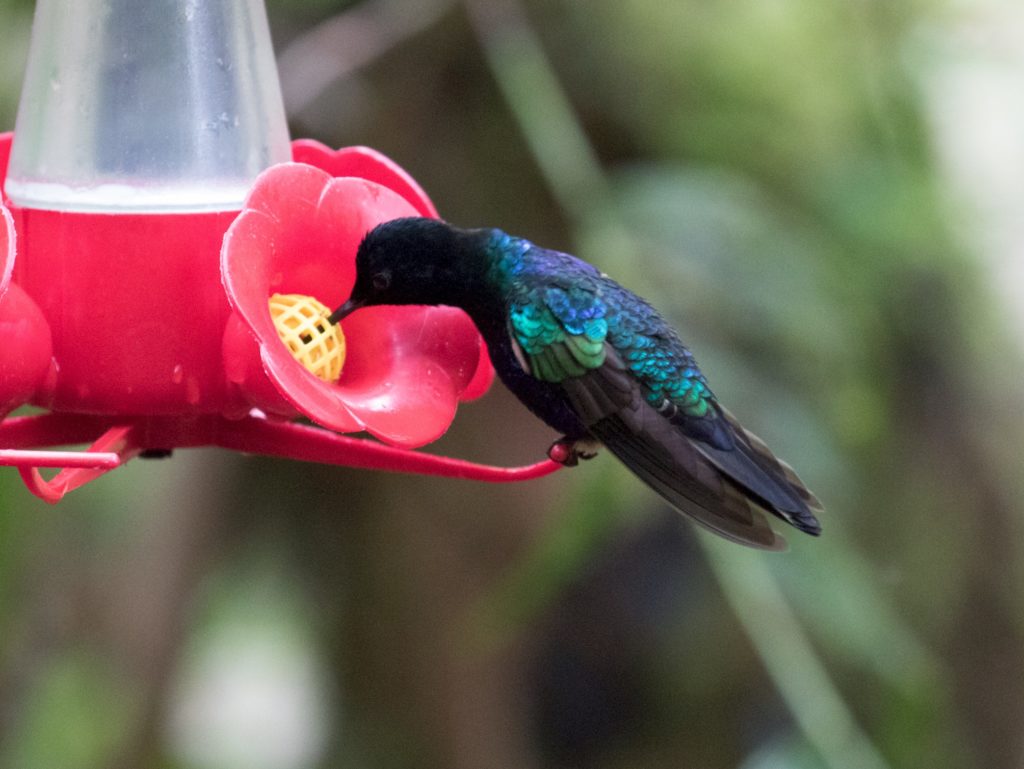
So many Beautiful Hummingbirds!
Dinner was excellent and we met some interesting people. Bob struck up a friendship with an avid birder from the Philippines who had some impressive photography equipment. We joined a night walk and saw the San Isidro Owl, one of the rarest birds in the world. It’s only found in the high jungle around the San Isidro area on the east slope of the Andes mountains. Very cool!
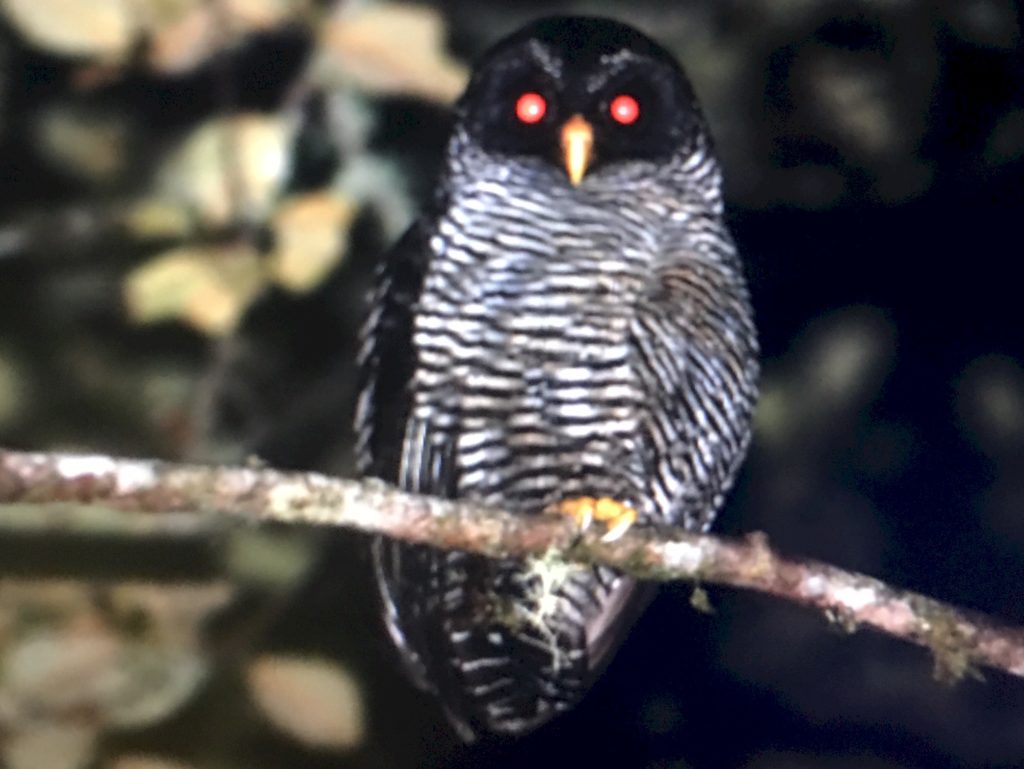
Very Rare San Isidro Owl

Tuesday, February 28th
We joined a group in the early morning sun to see the White-bellied Antpitta. As we ate a delicious breakfast we spotting the gorgeous Ling-tailed Sylth hummingbird.
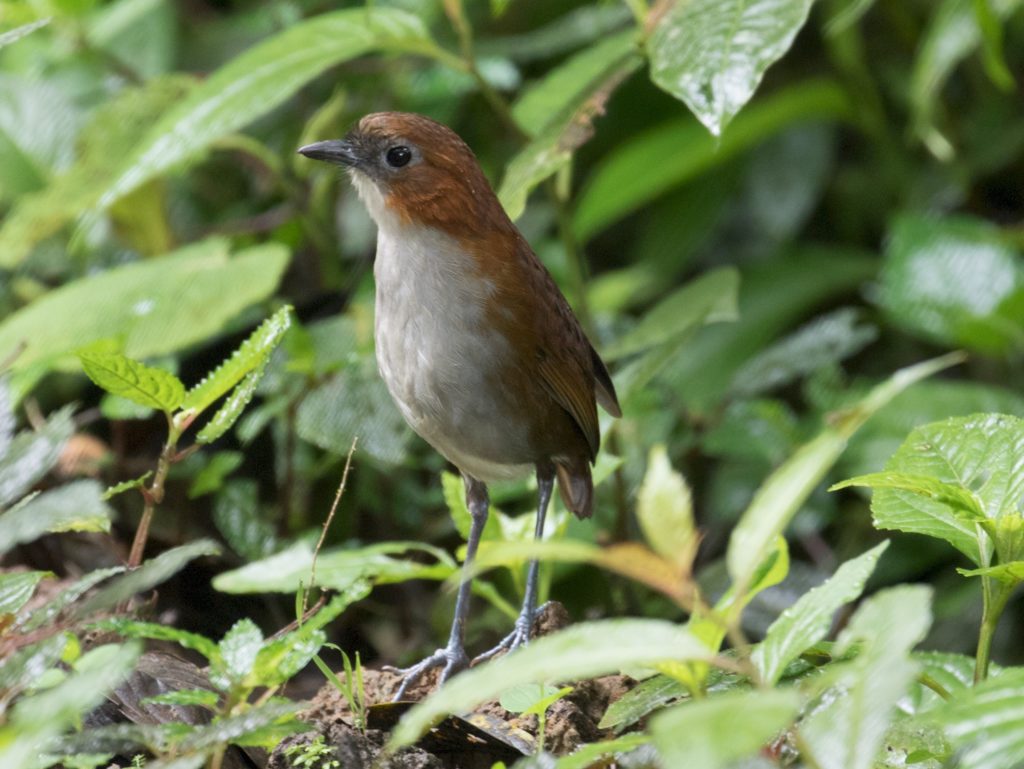
White-bellied Antpitta 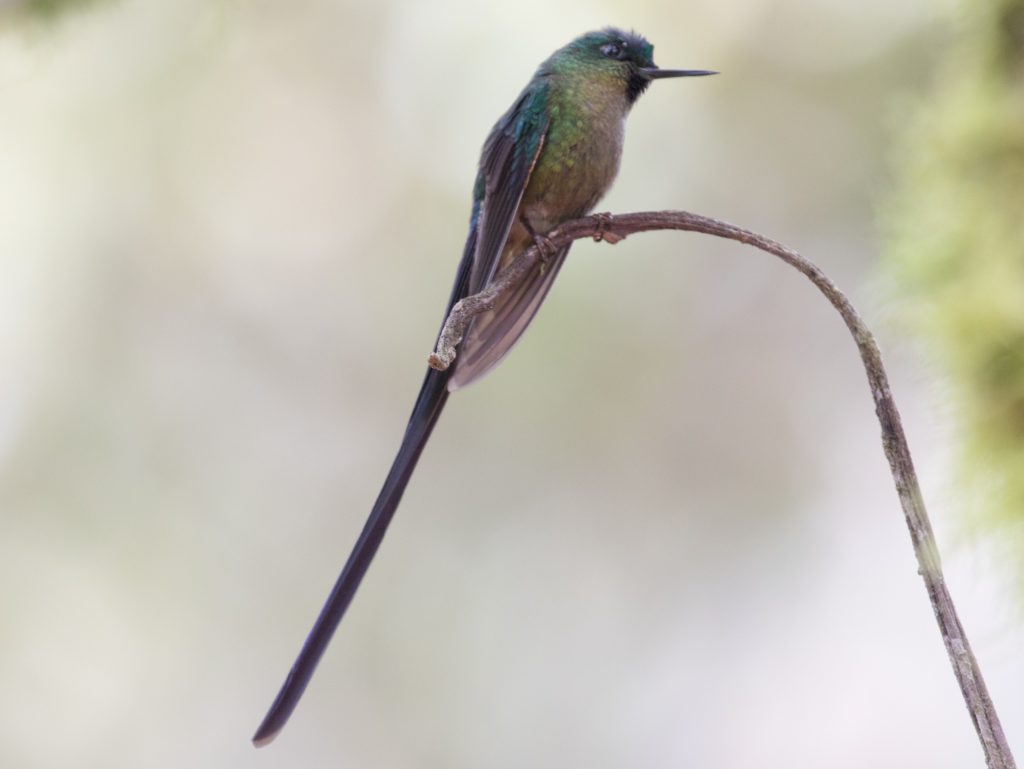
Ling-tailed Sylth Hummingbird
We took a long drive through open jungle and passed several rural farms (fincas). We saw Oropendolas nesting and several other colorful birds, such as the Summer Tanager, ButterFlycatcher, Golden-naped Tanager, and the Blackburnian Warbler. We drove over rickety bridges and sometimes through shallow streams until we came to a place called Sierr Azul Mountain Rainforest Reserve. We crossed a long footbridge over a beautiful river and took a hike.
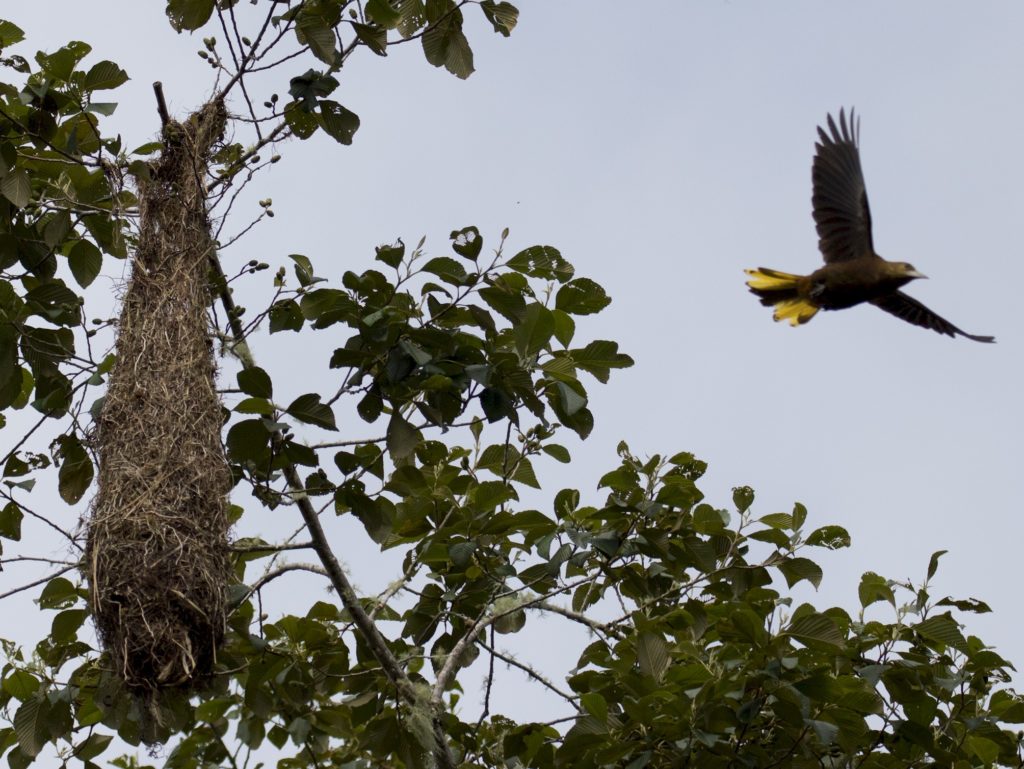
Oropendola Leaving the Nest 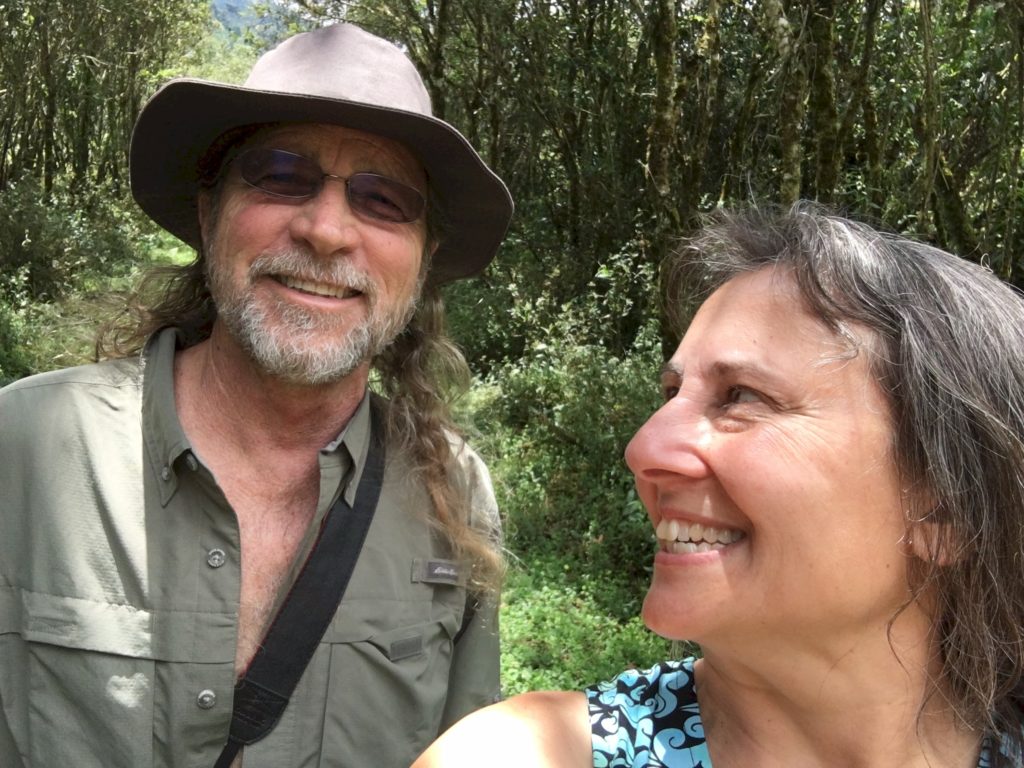
Bob and Gina Enjoying Sierr Azul 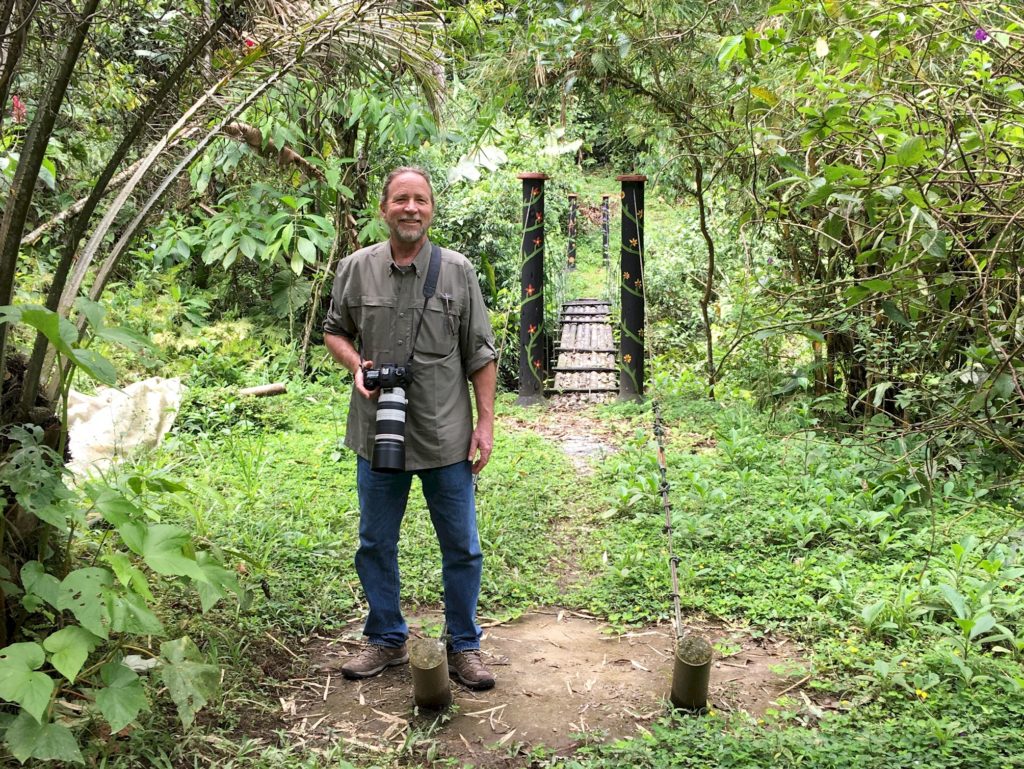
Bob at Sierr Azul 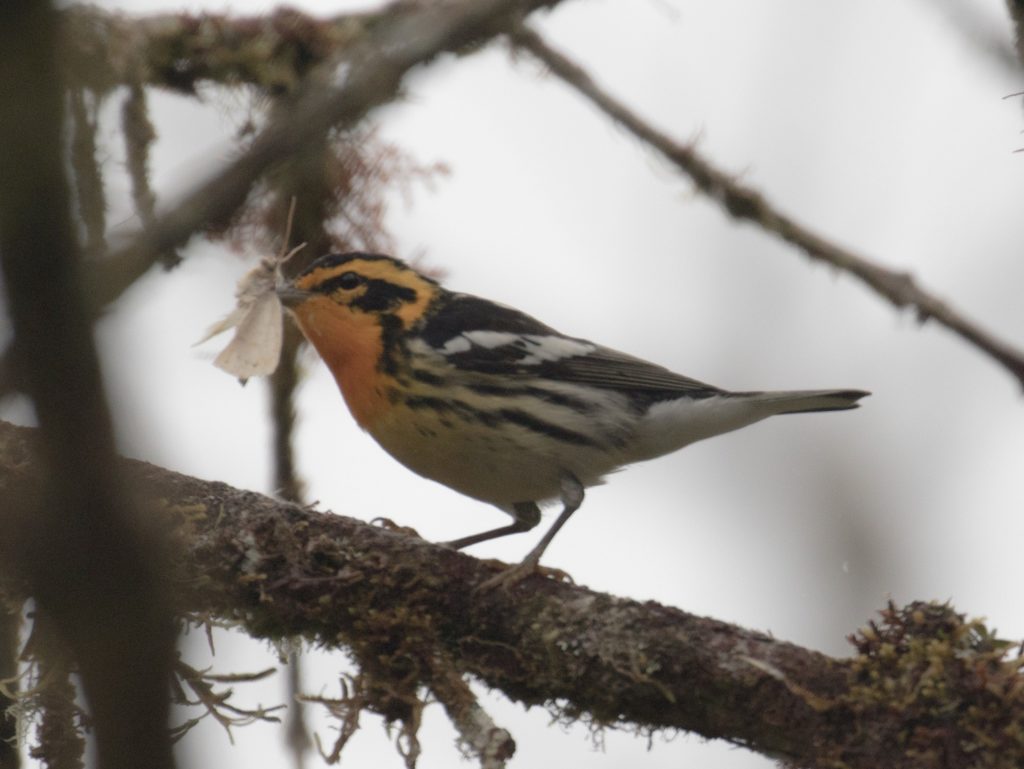
Blackburnian Warbler
When we returned to San Isidro for lunch we discovered that all of the other guests had left to attend Carnival events. We had the place to ourselves! Bob set to work organizing his photos and I took a long walk. I returned and explored the lodge area, discovering another common area with a game room that included a pool table. We hung out there for a while, then went to see more hummingbirds before having another delicious dinner and then to bed. Cabanas San Isidro was great!
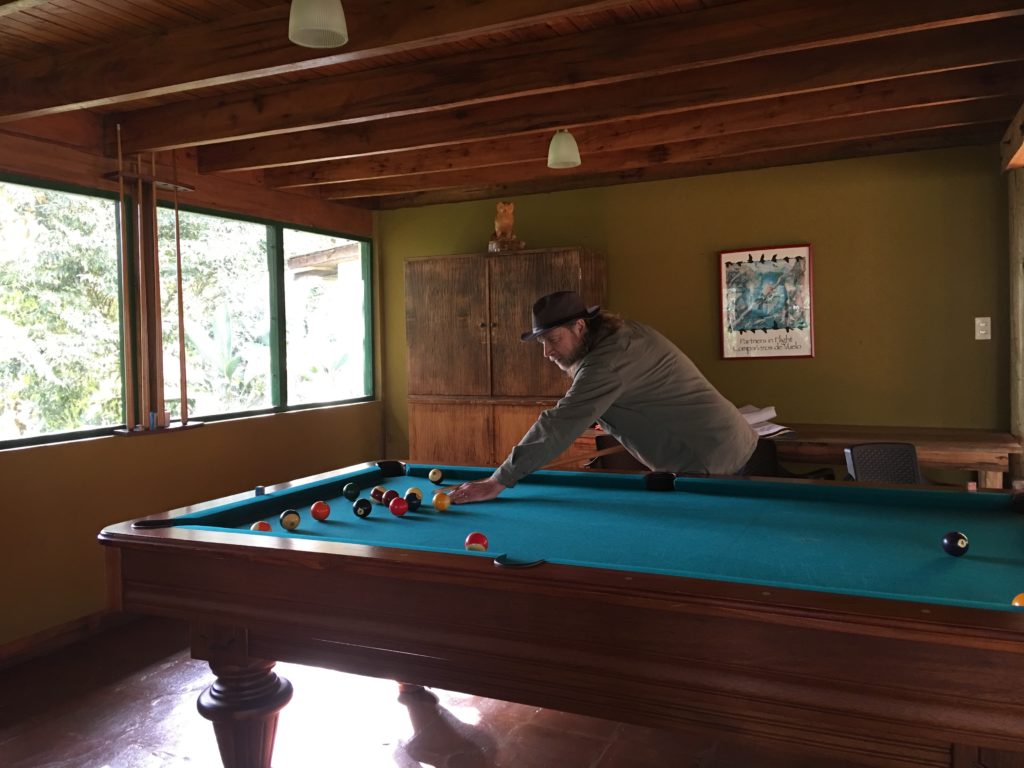
Enjoying the Game Room 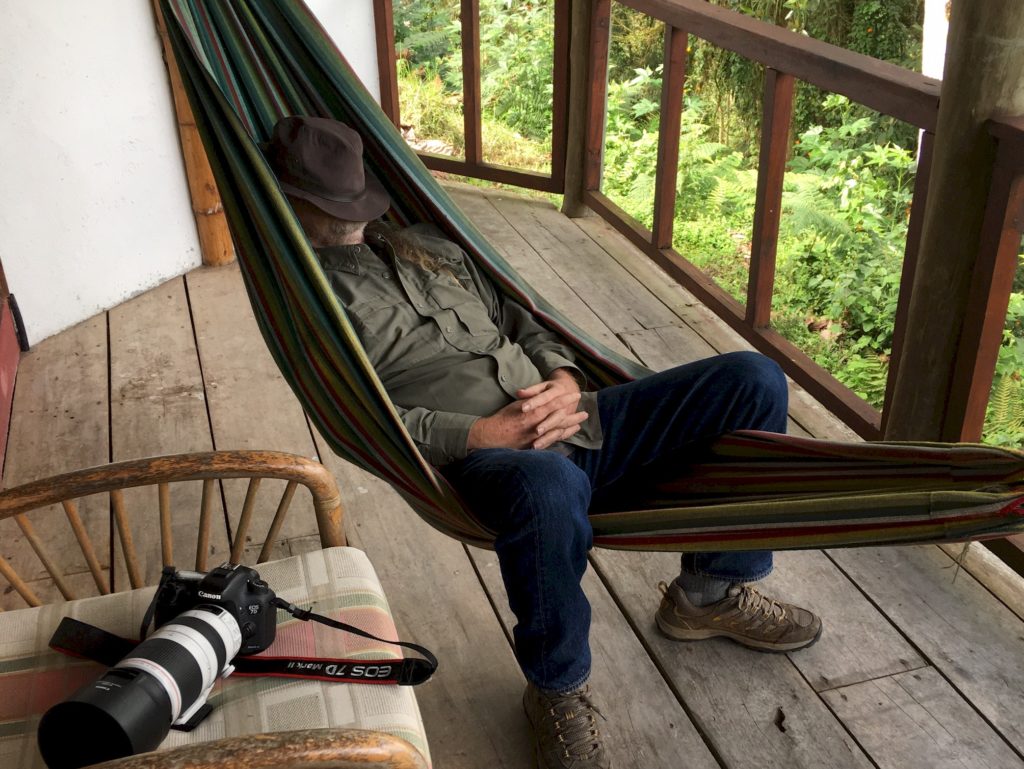
Siesta! 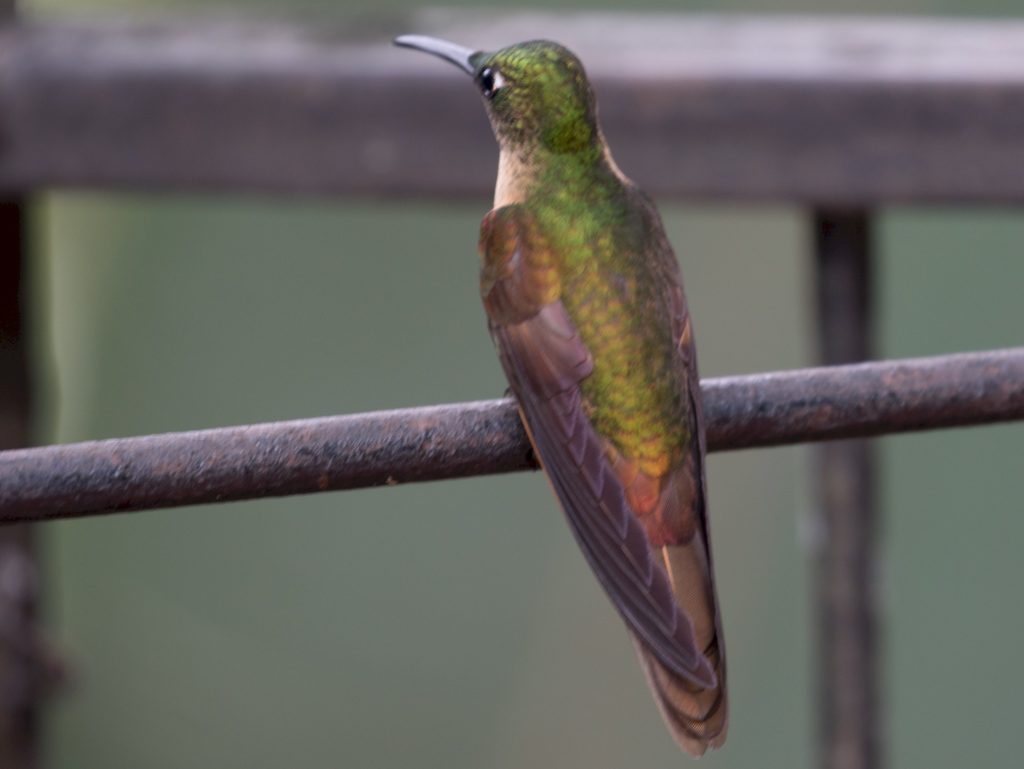
Another Beauty 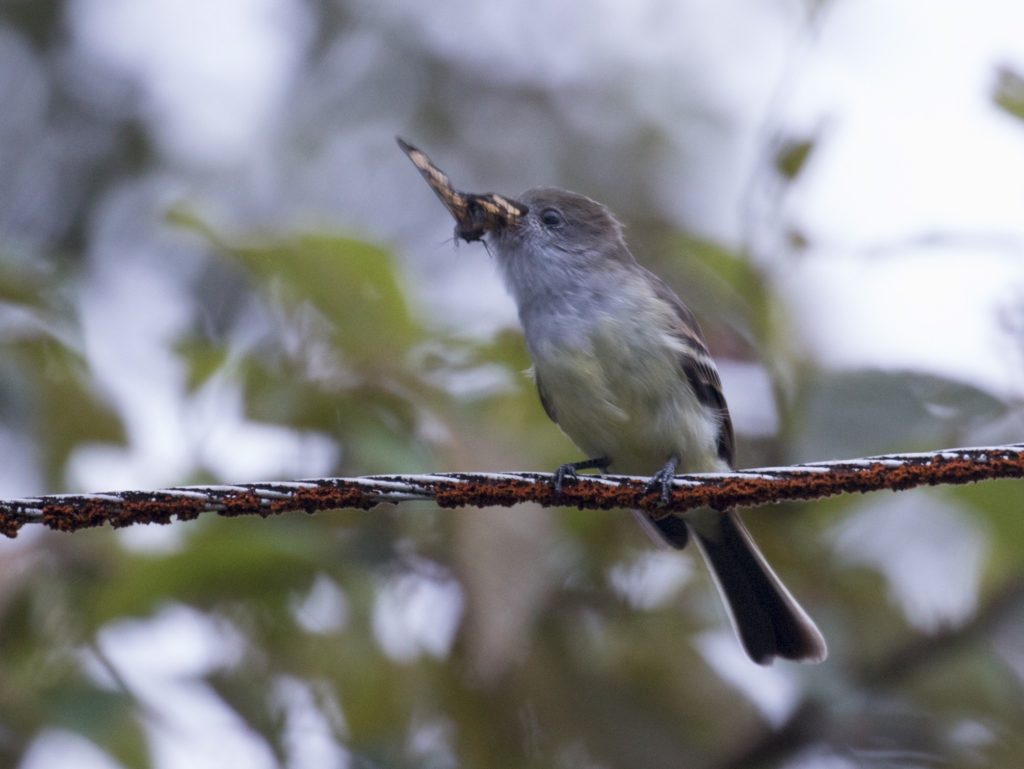
Butterflycatcher

Wednesday, March 1st
After breakfast we headed south toward the large city of Cuenca. Since this was too far to drive in one day a San Isidro bird guide suggested a hosteria in the town of Macas. We headed out in the rain and traveled through the Amazon highlands. We passed many tiny towns crowded close to the roadside. We saw lumber being harvested using horses for transportation and so many amazing plants and flowers.
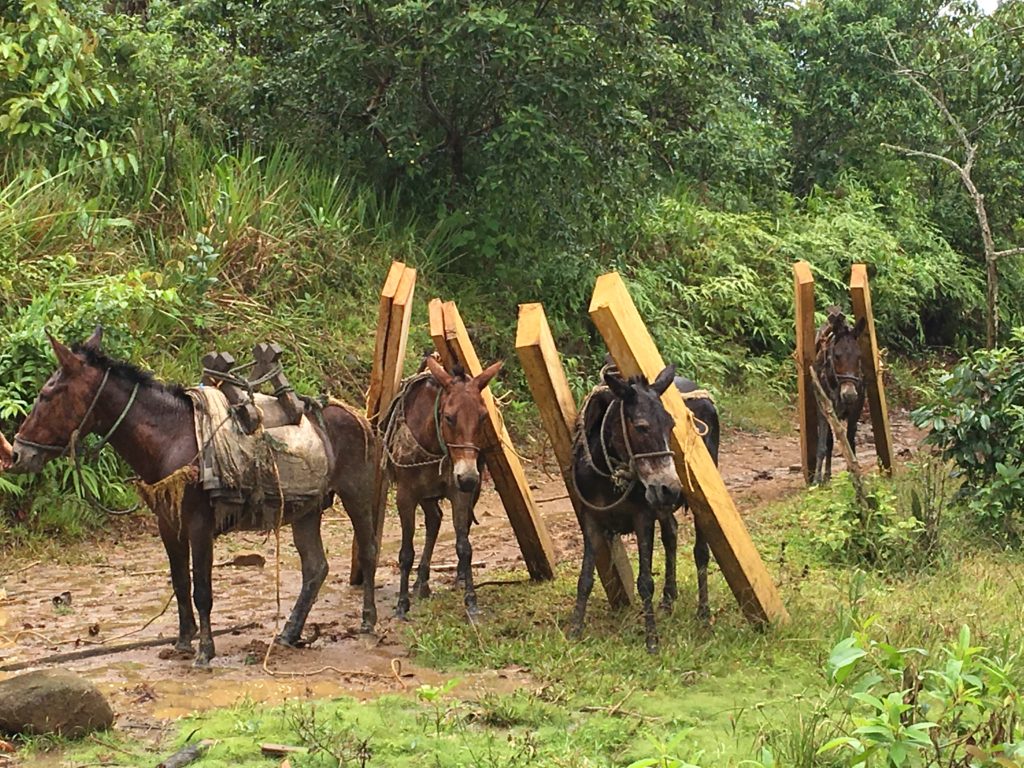
Work Horses 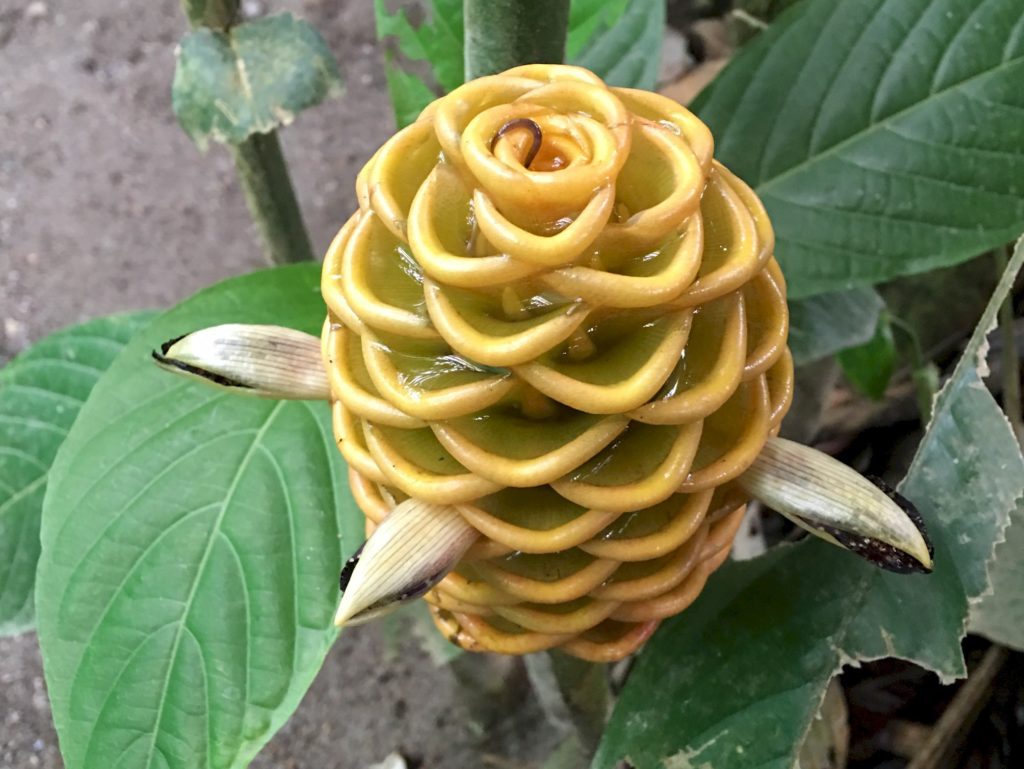
Unusual Flora
We were unable to find the recommended hosteria in Macas, so we went back to a place we had recently passed that looked very grand. The Mansion De La Amazonia was really cool! It was large, with marble floors, hardwood furnishings, and lots of Spanish-style ironwork. Our room key was a large iron antique. Apparently the place had been full for the busy Carnival four-day weekend, but was now empty. Once again we were the only guests. It was warm and muggy in this low and southern area. We added several additions to our mosquito-bite collection as we roamed the beautiful grounds. We had a simple dinner and a good night’s rest.
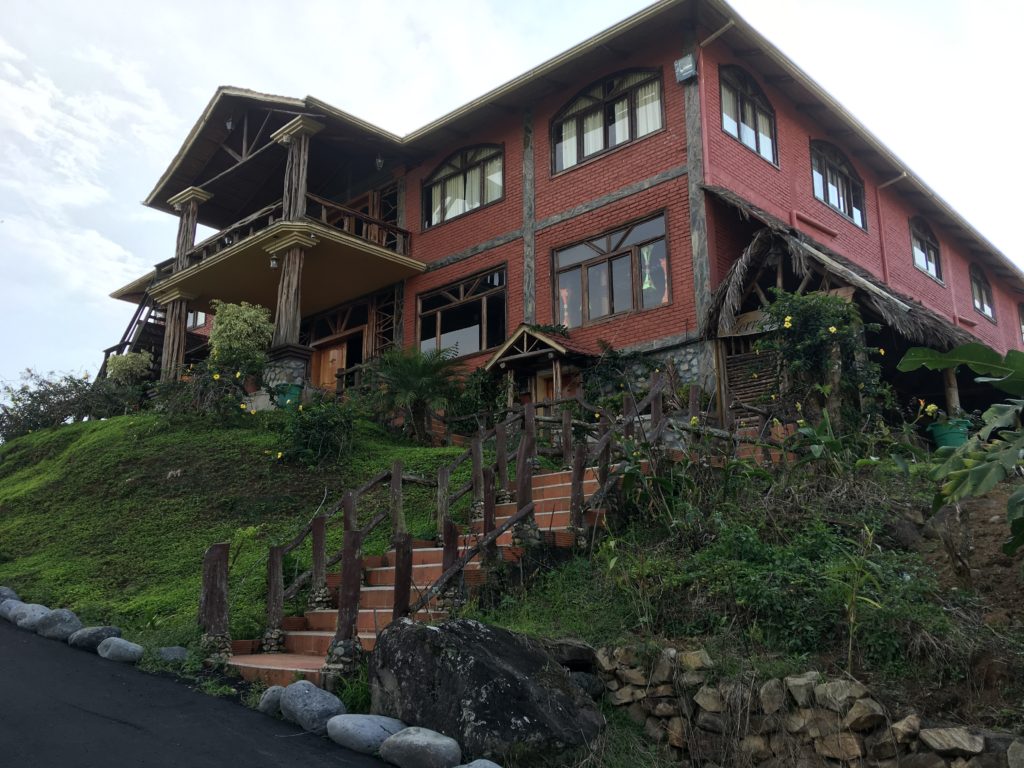
Mansion de la Amazonia 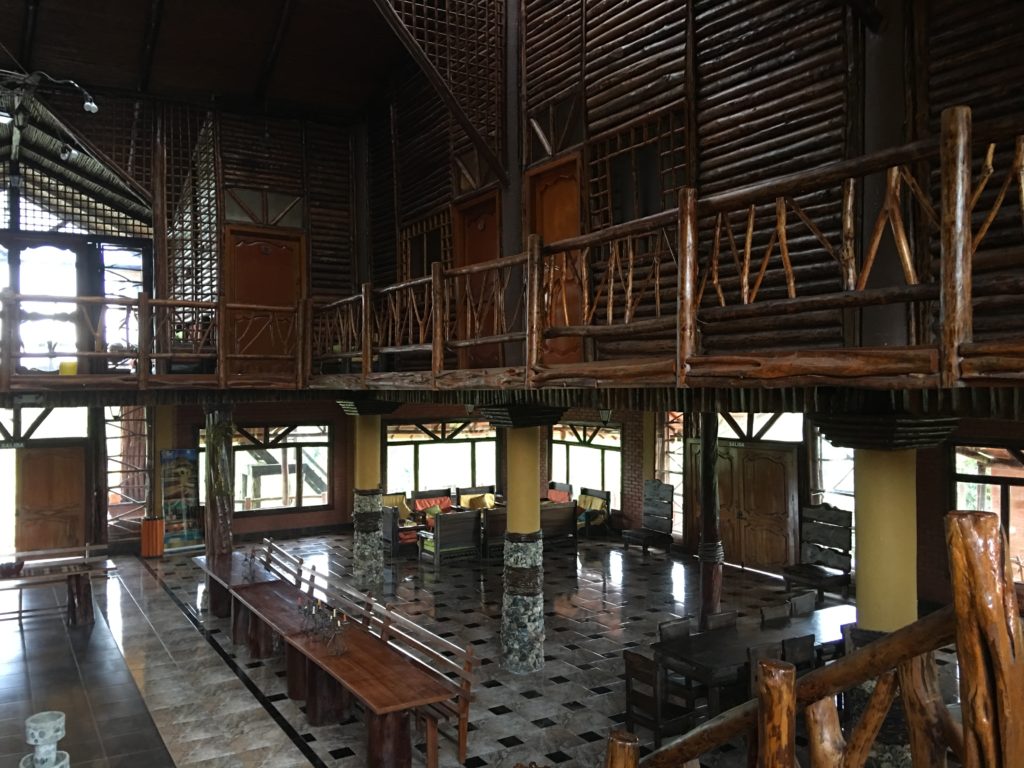
Amazonia Lobby 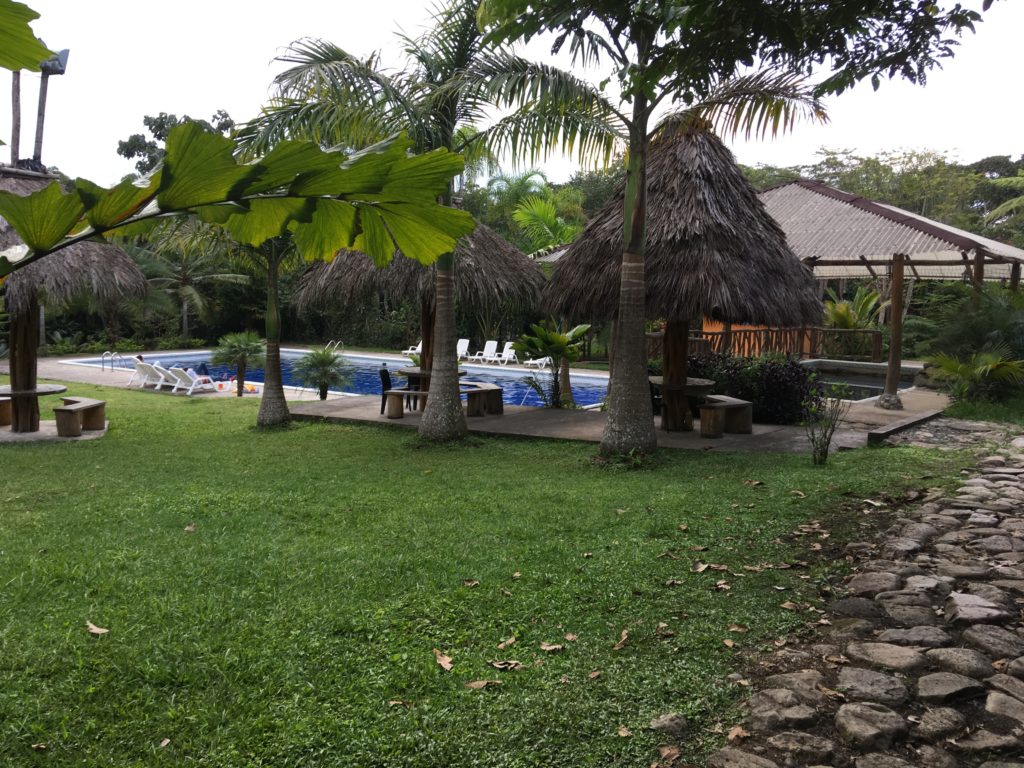
Tropical Pool 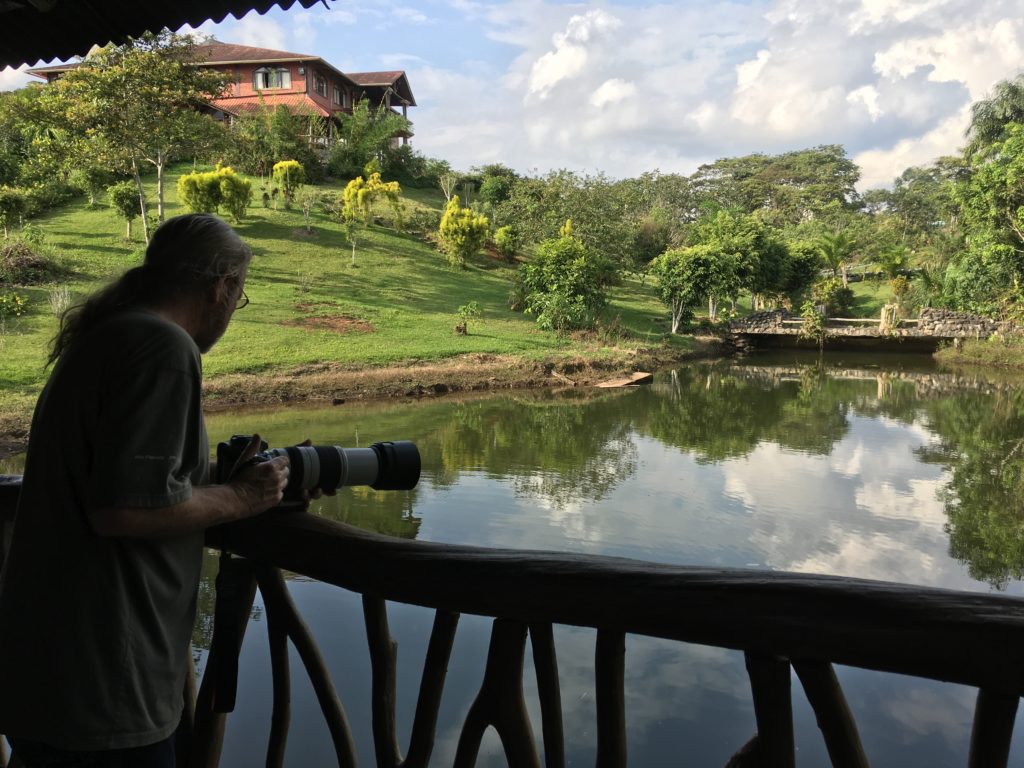
Bob at the Amazonia Pond

Thursday, March 2nd
It was pouring rain when we awoke with thunder rumbling through. We found some coffee and spread out the map to plan our day. We decided to continue south and visit the Incan ruins called Ingapirca. We drove through high ranges of dense fog and clouds, past rushing cascades, tiny mountain villages, and dozens of rivers. As we went on it stopped raining, the fog cleared, and we could see breathtaking Andean views. Each town had a unique character and interesting buildings. We went past a large dam with police roadblocks on either side. They did not speak English and we spoke very little Spanish, but they understood that we were tourists heading to the Incan ruins and let us pass through.
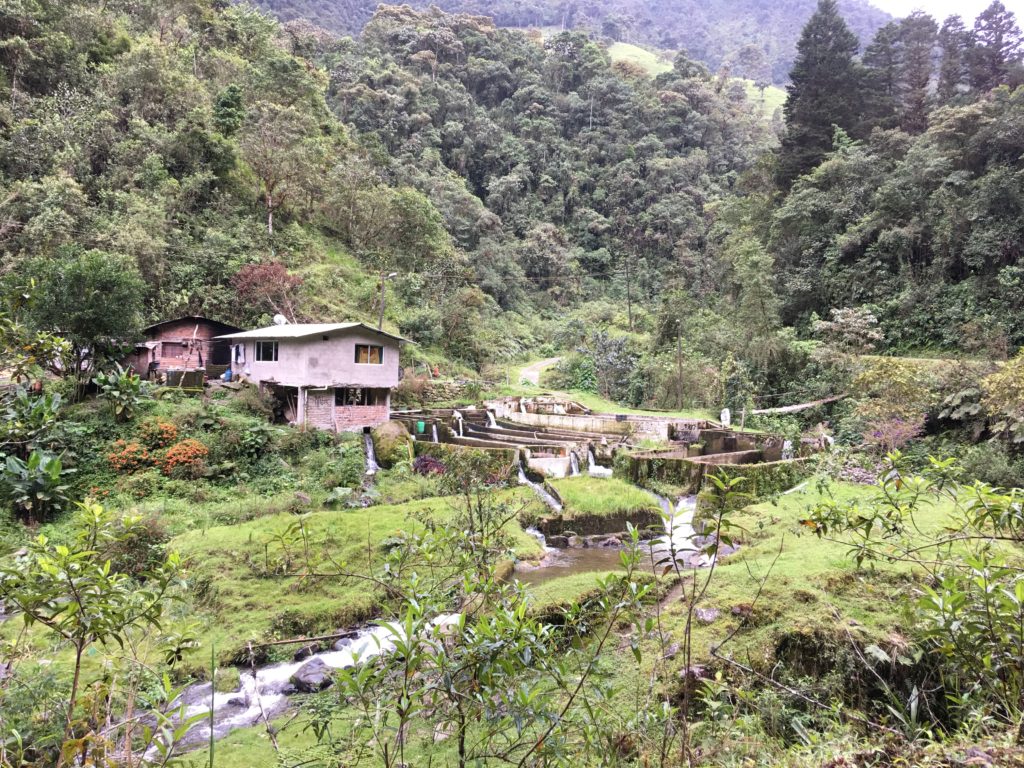
High Mountain Home 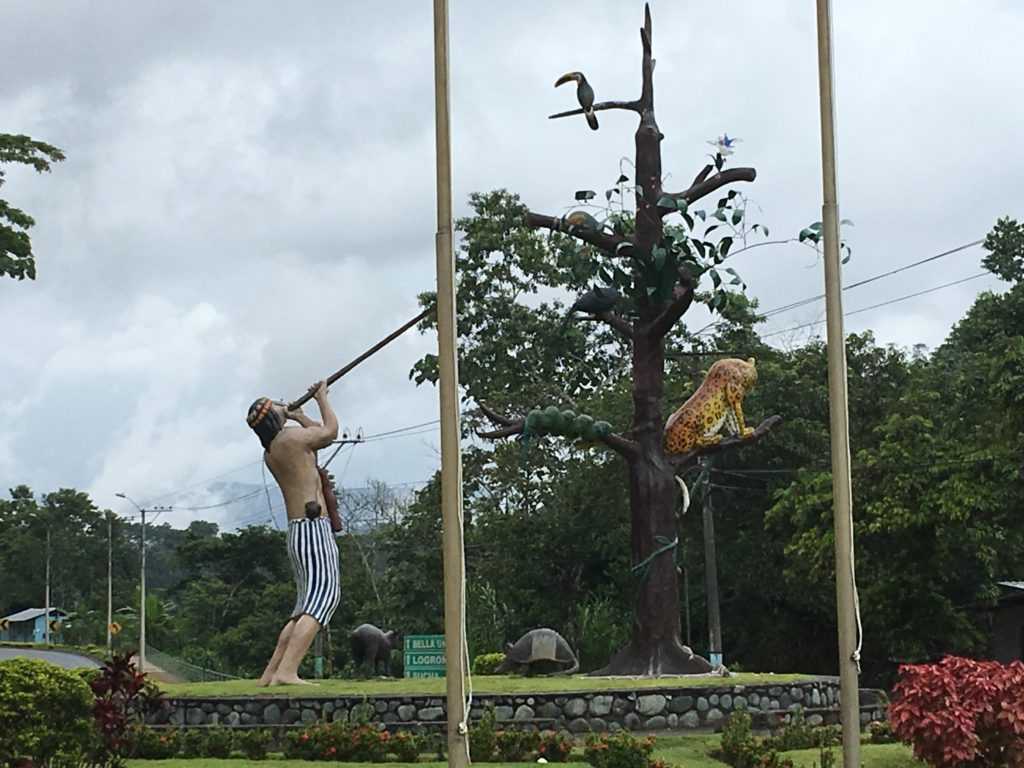
Statue in a Town Square
When we arrived at Ingapirca the sun came out. We were provided an English-speaking guide who dramatically revealed the fascinating history of these ancient Incan ruins built atop an even older settlement of the indigenous Canari people of Ecuador.
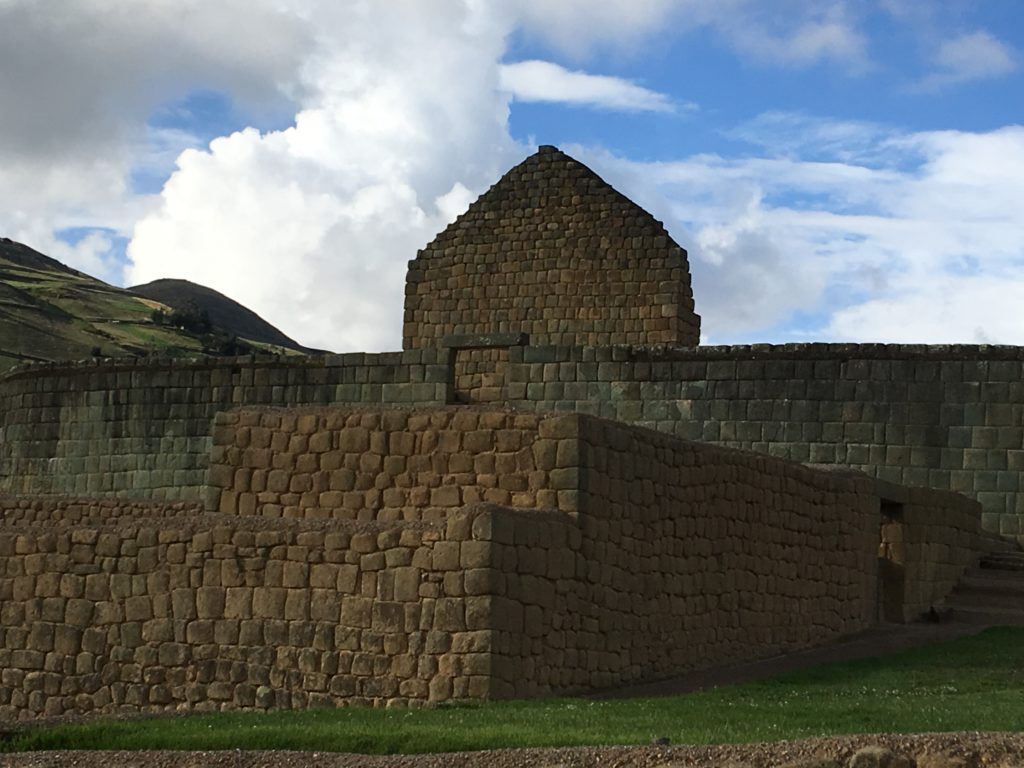
Ancient Walls 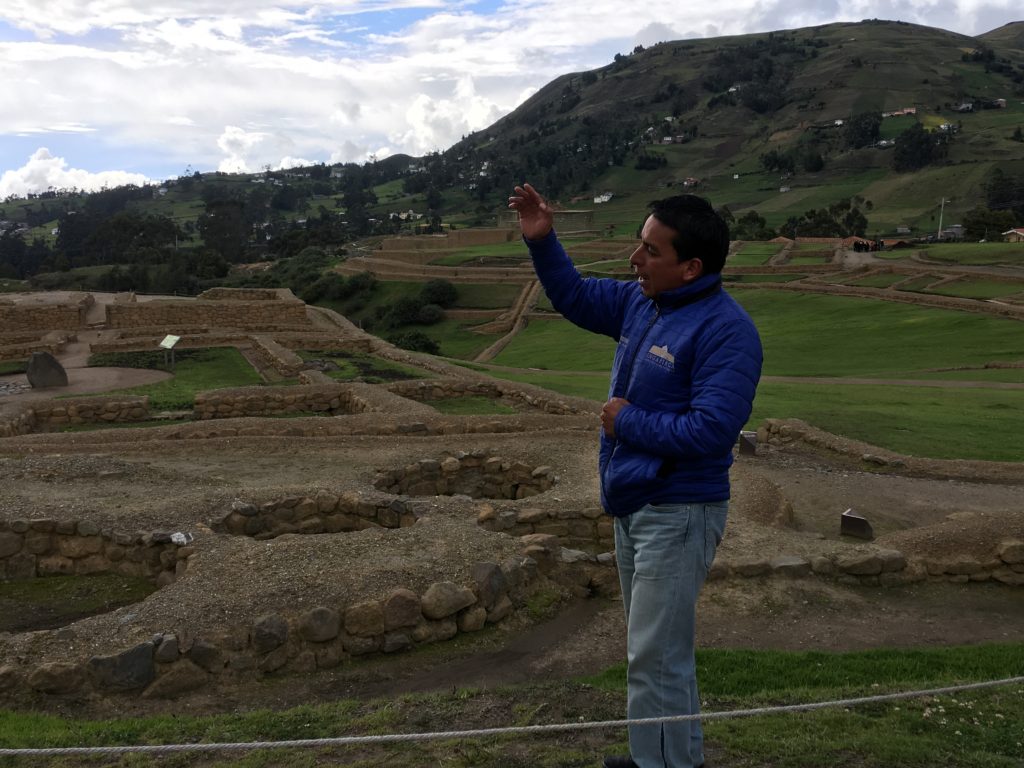
Our Dramatic Guide 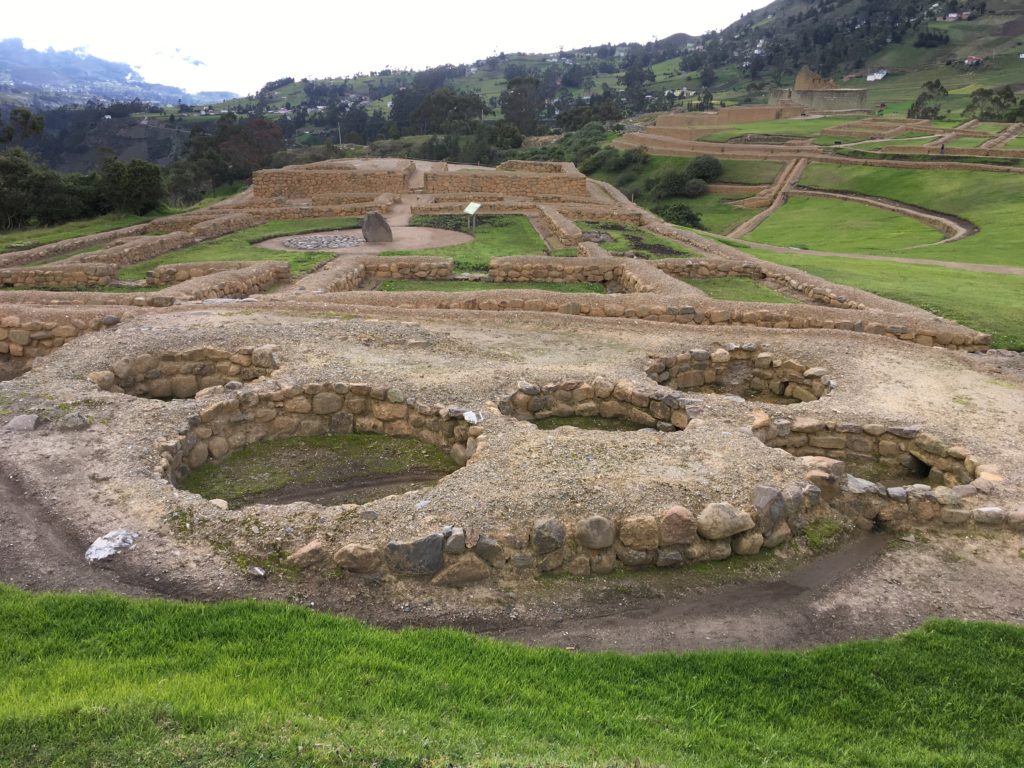
Ingapirca Ruins 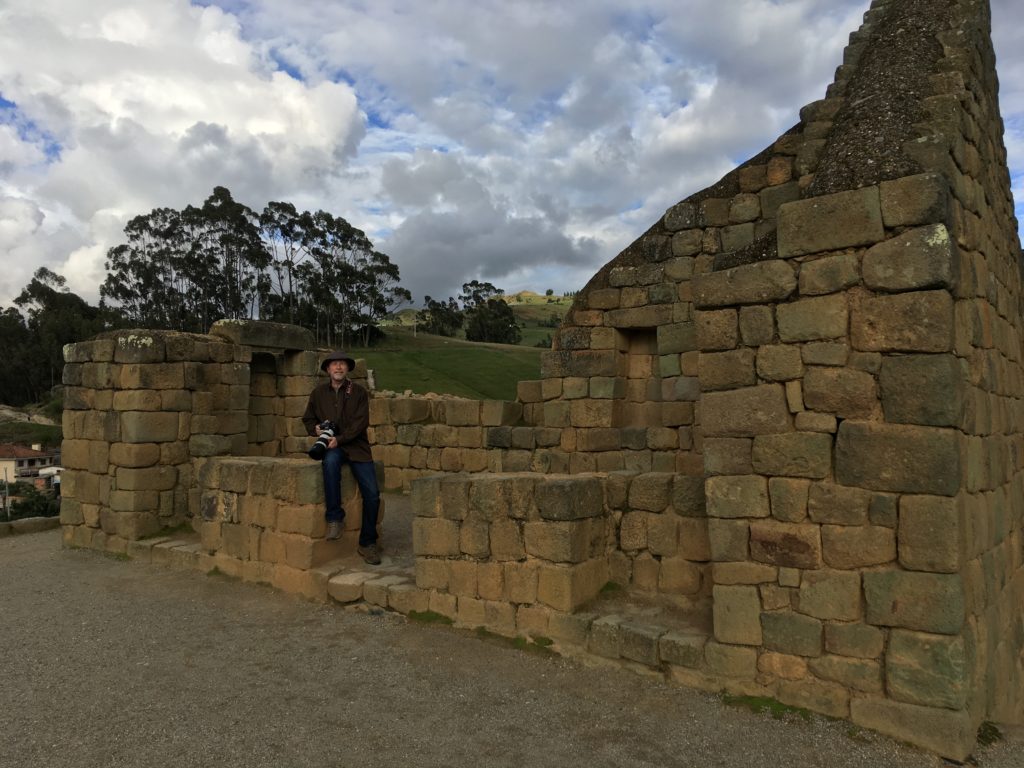
Bob with his Camera
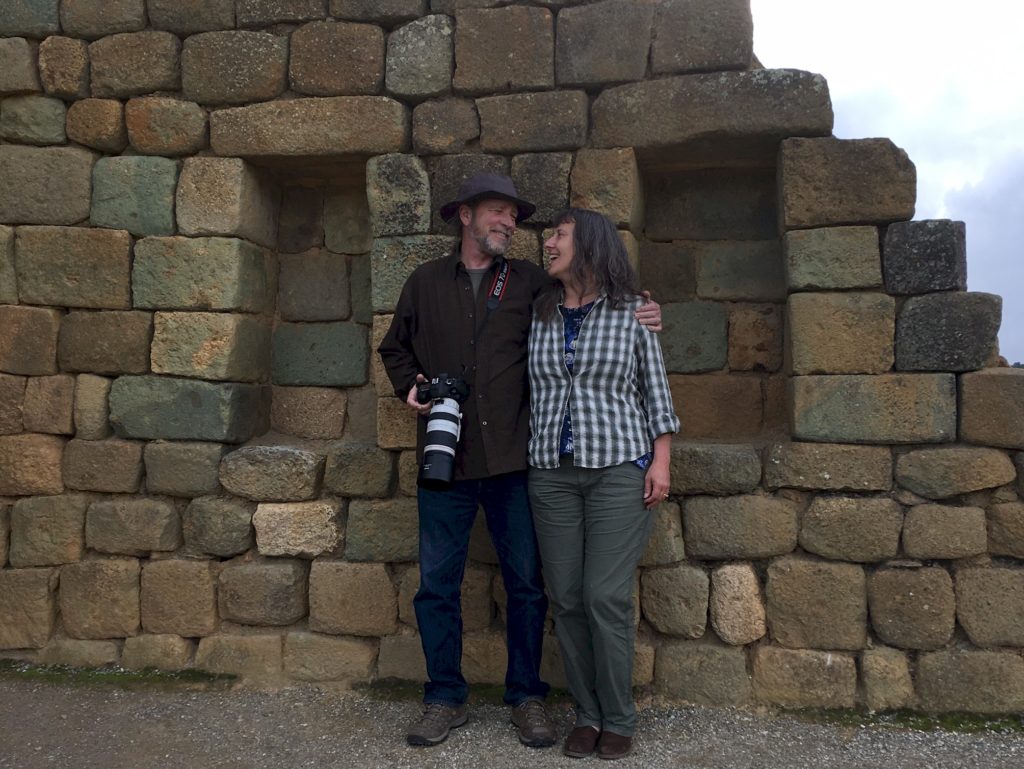
Enjoying the Ingapirca Tour
After the tour we returned to the car and it began to pour once again. We continued south and it was growing dark by the time we came to a place to spend the night: El Choro Hosteria. We had a good meal in the hosteria restaurant and slept well, in spite of the unaccustomed humidity.

Friday, March 3rd
We decided to head toward Guayaquil in the marshy southern lowlands to see some waterfowl. We passed densely populated cities and towns that appeared run-down and chaotic. It continued to pour as we drove through endless heavy traffic of huge public buses, large freight trucks, small underpowered and over-loaded produce trucks, motorcycles carrying multiple people, and bicycles. Driving is a competitive sport here and we did our best to stay alive. The roads had no shoulders and we found very few side roads, so it was very hard to get photos of the many marshland birds. We were able to photograph the Wattled Jacana, Limpkin, Snail Kite, Black-necked Stilt, Ringed Kingfisher, Black-crowned Night heron, and a beautiful Roseate Spoonbill in the flooded fields.
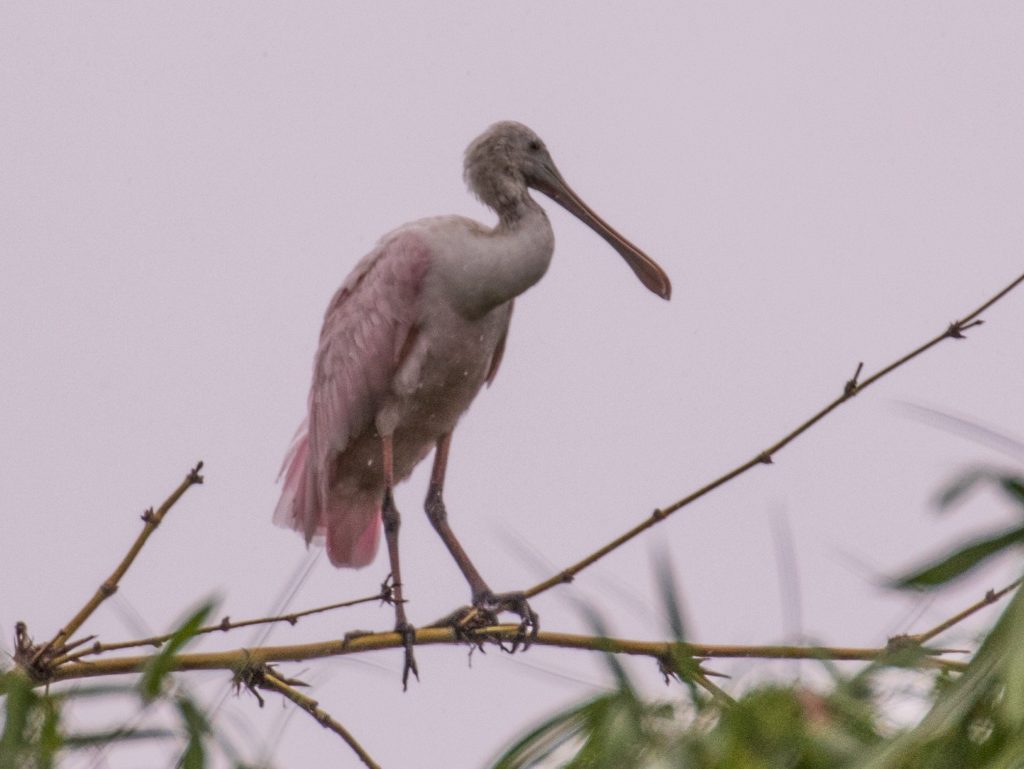
Roseate Spoonbill 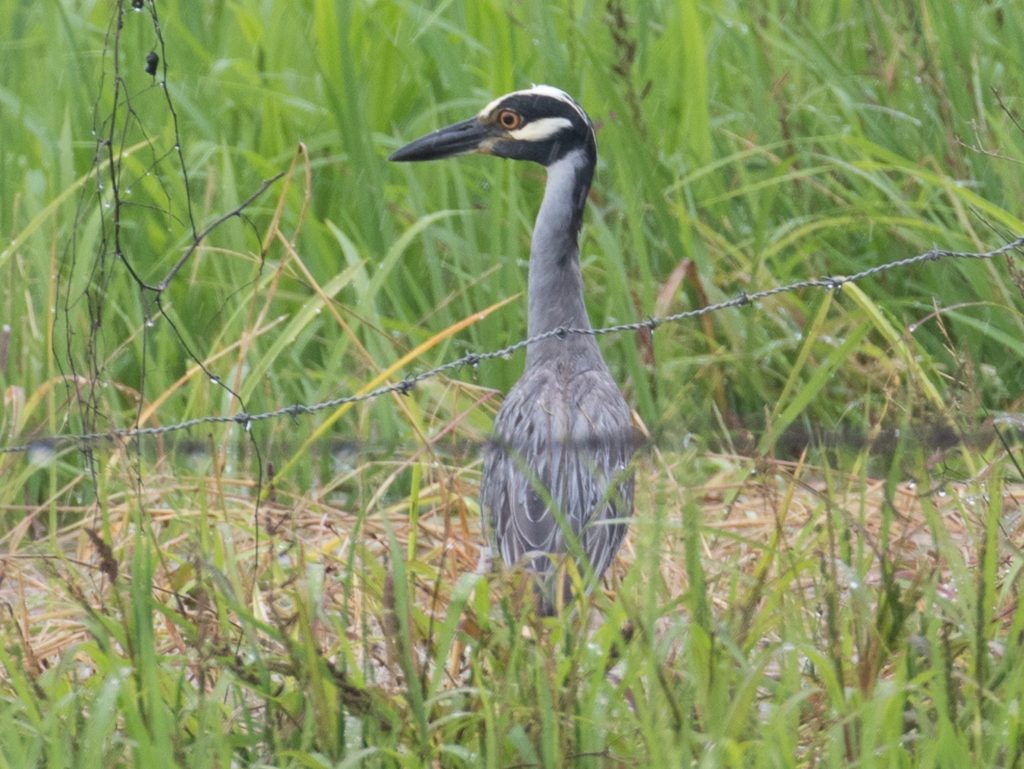
Black-crowned Night Heron 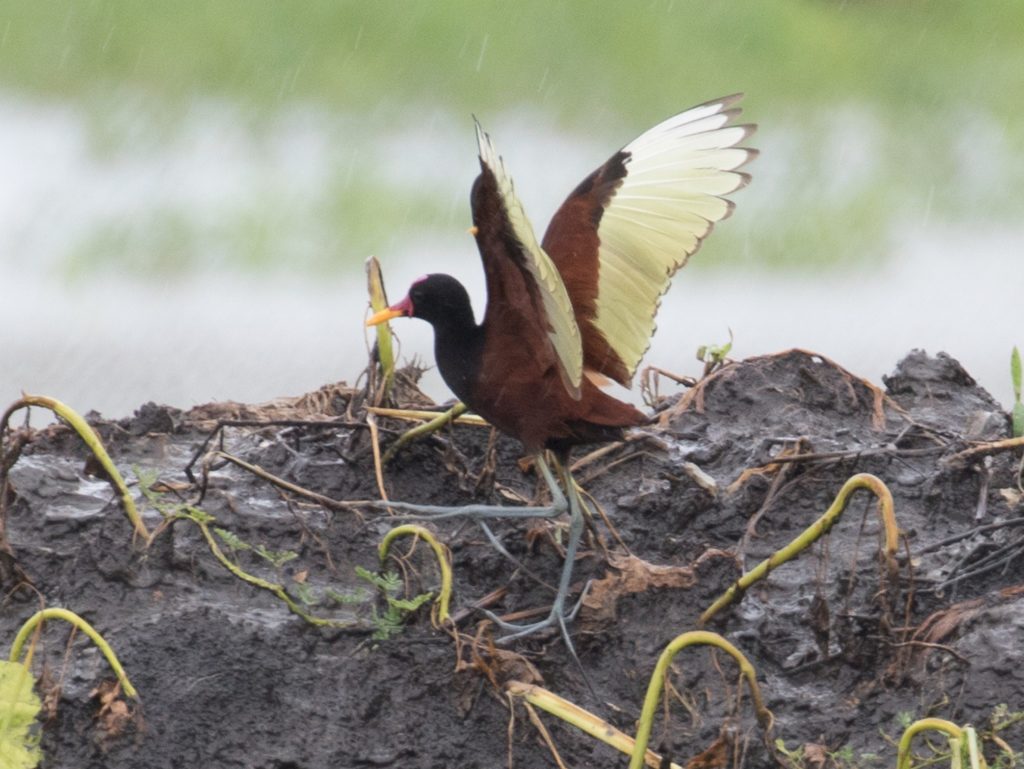
Wattled Jacara 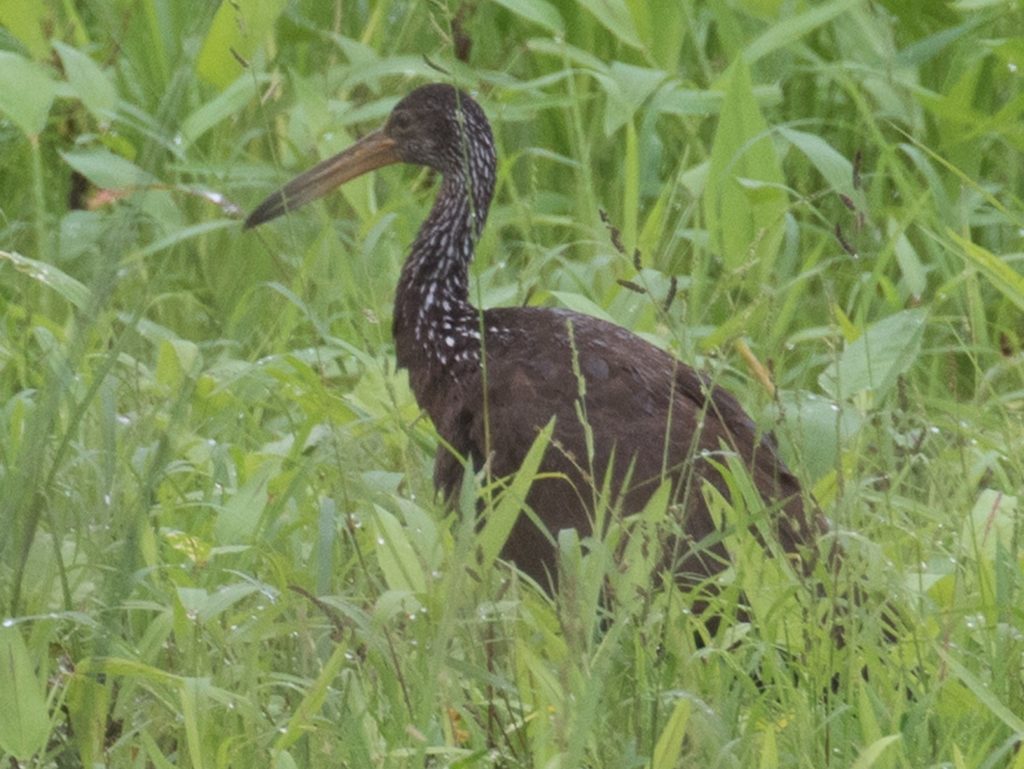
Limpkin
We stopped for coffee and a pastry in one of the many cities along our route, but we found the torrential rain and the stray dogs roaming the streets depressing. The weather forecast looked grim for the next several days, so we fed our pastry remains to the hungry dogs and decided to return to Mindo.
Above: Driving through a typical wet city in humid southern Ecuador.
We had been advised to stay at the Yellow House in Mindo. We found it (officially called the Hacienda San Vicente) in the hills above Mindo as it was growing dark. Our friendly landlady provided us with a three-room suite adjoining a spacious covered balcony. The rain continued to fall as we drove into town for diner at the Dragonfly before returning to the Yellow House and crawling into bed after and exhausting day.

